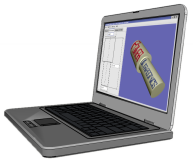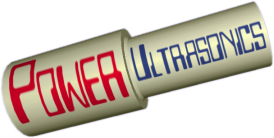A new online ultrasonics components store has just opened at www.UltrasonicsWorld.com. Check their amazing prices for replacement ultrasonics components, fully compatible with the major manufacturers' originals at a fraction of the cost.
You are here
Effects of ultrasonic vibrations - friction and stress
Friction reduction
One consequence of the immense accelerations generated by high-power ultrasonics is that unless surfaces are held very firmly together they will tend to separate. Where one surface is required to move over another with minimum friction, this effect can be exploited - while there is no contact between the surfaces friction is reduced to zero. Furthermore the relative movement may cease during the time when the surfaces are in contact, allowing all movement to happen under zero friction while they are apart. This is one of the effects used for ultrasonic metal forming - the tools vibrate so that the workpiece can move over them with little or no friction.
Stress superposition
This is the other effect used in ultrasonic metal forming. In order to deform a metal workpiece the stress within it must be sufficient to cause yield. Normally this stress is generated by an external mechanical force only (e.g. from a press tool). If the workpiece is also subjected to ultrasonic vibrations, these will generate alternating stresses which are superimposed on the constant stress due to external force. The workpiece will begin to deform when the total stress exceeds the yield limit, during that small part of the vibration cycle when the vibration stress is at a maximum, and the external force can be much lower than would normally be required. This effect is usually only useful where the external force is limited by some feature of the process itself e.g. if force must be transmitted through the workpiece itself, and it has insufficient strength.

